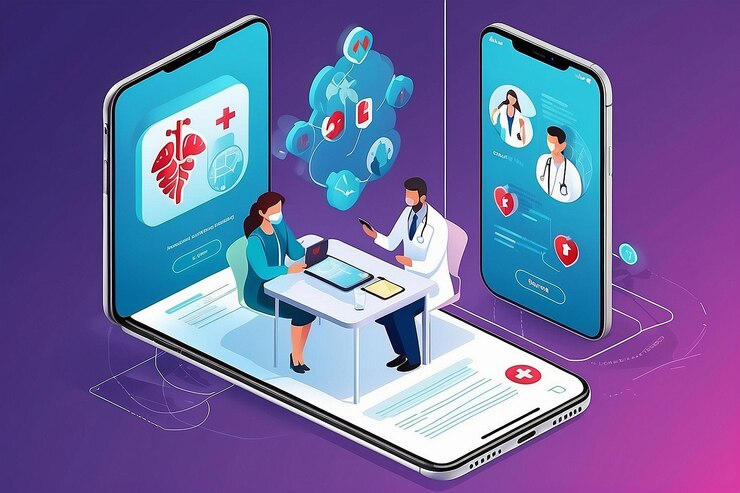How is Telemedicine Changing the Healthcare Industry?
Introduction
Telemedicine transforms healthcare by allowing patients to consult with healthcare providers remotely using technology like computers and smartphones. Med Revolve Billing has an overview of how telemedicine is changing the healthcare industry, making it more convenient and accessible for patients.
Telemedicine offers a range of benefits, including improved access to healthcare services, cost-effectiveness, and increased patient engagement. Despite facing challenges such as technology limitations and security concerns, telemedicine’s future looks promising, with advances in technology and increasing acceptance.
Benefits of Telemedicine to the Healthcare Industry?
1.Improved Access to Specialists:
Patients may consult physicians through telemedicine who might not be in nearby areas. Patients who have complicated or rare illnesses can especially benefit from this. For example, a patient in a remote location could be able to consult with a specialist without having to travel to a different state or city.
2.Faster Access to Care:
Telemedicine reduces the requirement for lengthy lines for appointments. Patients may now obtain treatment more rapidly as a result. Patients who have urgent medical requirements and cannot wait weeks or months for an appointment should pay particular attention to this.
3.Increased Patient Engagement:
By providing consumers with easier access to their medical information and healthcare professionals, telemedicine enables people to play a more active part in their treatment. Patients can communicate with their providers more quickly and may be more likely to follow treatment plans.
4.Improved Health Outcomes:
Studies have shown that telemedicine can improve health outcomes, particularly for patients with serious conditions. Regular remote monitoring and communication with healthcare providers can help patients better manage their conditions and prevent complications.
5.Reduced Healthcare Costs:
By reducing the need for unnecessary trips to emergency rooms or urgent care facilities, telemedicine may contribute to lower healthcare expenses. It can also save patients money on transportation and time for medical appointments.

6.Enhanced Monitoring:
Telemedicine allows healthcare providers to monitor patients remotely, which is especially useful for managing severe conditions. For example, people with diabetes may monitor and modify their treatment programs by sharing the information they collect about their blood sugar levels with their healthcare specialists while at home.
7.Access to Remote Areas:
Telemedicine can reach patients in remote or rural areas with limited healthcare services. This can help improve access to care for populations that may otherwise have difficulty accessing healthcare services.
Med Revolve Billing Has Potential To Avoid These Challenges of Telemedicine
1.Technology Limitations:
Only some people have access to the necessary technology for telemedicine, such as a computer or smartphone. This can create a barrier to some patients’ access, particularly those in low-income or rural areas.
2.Digital Divide:
The difference between those who have access to digital technology and those who do not is known as the “digital divide.” This can cause existing healthcare inequalities, particularly in rural or poor areas where access to high-speed internet may be limited.
3.Licensing and Regulation:
Telemedicine providers must navigate complex licensing and regulatory requirements, varying from state to state. This can make providing care across state lines challenging and may limit the availability of certain telemedicine services.
4.Privacy and Security Concerns:
There are concerns about the privacy and security of patient information transmitted over the Internet. Healthcare providers are required to comply by laws like the Health Insurance Portability and Accountability Act (HIPAA) and make sure that patient data is protected from unwanted access.
5.Integration with Existing Systems:
Integrating telemedicine into existing healthcare systems can be challenging, requiring coordination between providers and technologies. It is necessary for healthcare institutions to make sure that their telemedicine systems work with their current IT infrastructure, including electronic health record (EHR) systems.

Future of Telemedicine
The future of telemedicine looks promising, with several trends and developments shaping its journey:
1.Advances in Technology:
Technology is rapidly advancing, enabling new telemedicine applications and making current ones more efficient and user-friendly. For example, mobile phones and remote monitoring tools are becoming more advanced, allowing for better monitoring of patients’ health status.
2.Increased Acceptance:
As more people become comfortable using technology for healthcare purposes, telemedicine will become more accepted and integrated into mainstream healthcare delivery. The increasing understanding of telemedicine’s benefits, like improved access to care and cost savings, contributes to its elevated acceptance.
3.Policy Changes:
Changes in healthcare policies and regulations are also driving the adoption of telemedicine. For example, the COVID-19 pandemic led to temporary regulation changes that expanded access to telemedicine services. These changes may become permanent as policymakers recognize the benefits of telemedicine.
4.Integration with AI and Big Data:
Telemedicine increasingly integrates with artificial intelligence (AI) and big data analytics. This allows for more personalized and effective healthcare delivery. AI can help providers make more accurate diagnoses and treatment recommendations, while patterns and trends in patient data may be found with the use of big data analytics.
5.Remote Monitoring:
Telemedicine allows remote monitoring of patients, especially those with severe conditions. This improves their health management and enables the early detection of complications. For example, patients recovering from surgery can use telemedicine to monitor their vital signs remotely.Their blood pressure, oxygen saturation, and heart rate may all be monitored through devices. This gives medical professionals access to up-to-date information to facilitate a speedy recovery and provide support as needed.
6.Improved Communication:
Telemedicine enhances communication between healthcare providers and patients, facilitating more frequent and convenient interactions. This improved communication can lead to better health outcomes by enabling healthcare providers to monitor patient’s progress more closely and provide timely guidance and support.
Conclusion
Telemedicine is transforming the healthcare industry by improving access to specialists, providing faster care, increasing patient engagement, improving health outcomes, and reducing costs. Advances in technology and increasing acceptance drive this, with companies like Med Revolve Billing leading the way.
Engage and Explore
How Med Revolve Billing can increase your revenue and optimize your RCM

